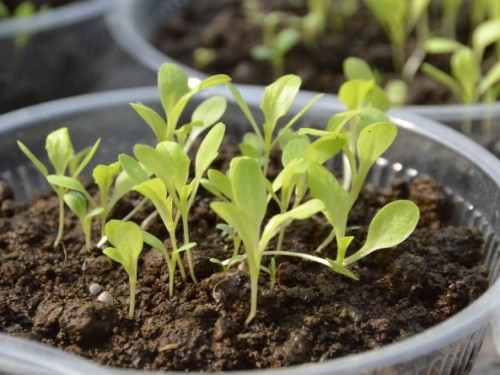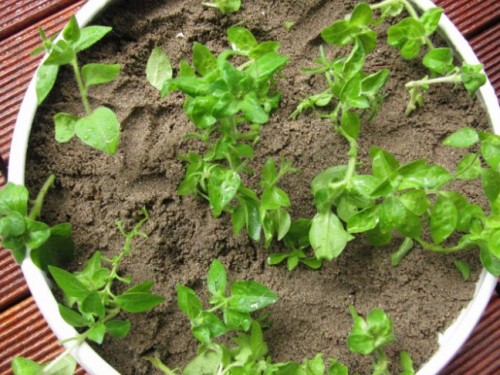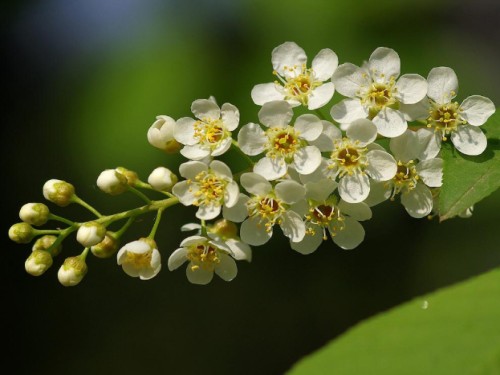Sowing method and post-germination management of goldfish grass
Goldfish not only has many flowers and colors, but also has a long flowering period, which is a very good herb, generally sowing. The sowing season is the best in spring and autumn, and the flowering season is usually from March to June. In order for flower friends to have a deeper understanding of goldfish, let's start with sowing:
It takes about 100 days for spring sowing and flowering, 80 days for summer sowing and 120 days for autumn sowing, and the sowing method is relatively simple, because the seeds are relatively small, so there is no need to cover the soil after sowing, watering should be careful not to wash away the seeds, and the germination temperature is about 21 ℃, so flower friends should choose whether to cover the film according to their own sowing season and place it in the semi-shade after sowing. It will sprout in about a week or so. Remember to expose yourself to the sun.

Generally speaking, it can be transplanted about 6 weeks after germination. By the way, goldfish grass can top, and it has a lot of benefits, and it can burst a lot of lateral buds.
Goldfish grass can reproduce by itself. When the fruit is ripe from June to July, it should be harvested in time, cut off together with the pedicel, put it on the weave to dry, store the seeds in a dry place, and sow in September. The varieties of goldfish grass are very easy to be mixed, so as the mother plant of seed collection, it should be planted in isolation to avoid hybrids.
1. Seeding in seedbed
It is better to choose sandy loam soil with loose soil structure, low groundwater level, good drainage and rich organic matter in seedling bed. The seedbed requires fine and smooth soil. In order to prevent the occurrence of diseases and insect pests, the sown land was sunburned 2-3 times about 25 days before sowing, and carbofuran was used to disinfect the soil before sowing.
When sowing, pour the seedbed thoroughly, mix the seeds with fine sand at 1:4, spread them evenly on the seedbed, and cover with a thin layer of plant ash after sowing. Cover it with 50% shading net after watering, avoid sun exposure, and transplant 5-6 weeks after emergence.
2. Burrowing dish sowing seeds
Disinfection of seeds and media is very important. The seeds were soaked in potassium permanganate solution with a concentration of about 0.5% for 1-2 hours before sowing. Add 150-200g methyl topiramate powder to each cubic meter of medium (about 20 bags), stir 2-3 times to make the drug fully mix with the medium, then spray water while stirring, adjust to the medium "hold into a ball, loose but not loose". Cover it with film for 8-10 hours and then pack it in the acupoint plate.
Each hole plate can sow 200 seeds and put one seed in each hole. After sowing, gently squeeze the seeds with the hand to make the seeds stick with the medium, and then spray water with a sprayer and cover with newspaper or plastic film. If the nursery can be dry, wet and temperature controlled, it does not need to be covered. Keep the newspaper moist for a long time and open it after the seeds germinate.
Management after sowing:
After sowing, it is mainly water management, watering should be uniform, do not make the basin too dry and wet. Lift the glass at night, make it ventilated, and cover it during the day to prevent moisture from evaporating. The seeds can sprout and unearthed 7 or 8 days after sowing. After the seedlings are unearthed, the glass can be removed to expose them to light. Goldfish grass is more cold-resistant, but also resistant to half-shade, can resist the low temperature above-5 ℃, and is easy to freeze to death when the temperature is less than-5 ℃.
Goldfish grass is resistant to moisture and is afraid of drought. in the process of maintenance and management, watering must grasp the principle of "dry and wet" and spray water every 2 days or so.
Time: 2019-06-11 Click:
- Prev

Breeding method of snapdragon
Antirrhinum propagation methods are sowing and cuttage method. Seeding seedbed to choose loose soil structure, low groundwater level, good drainage, rich in organic matter sandy loam, the seedbed will be watered thoroughly, the seeds will be mixed with fine sand 1:4 sprinkled on the substrate. Cuttings in spring and autumn, while drilling side insert cuttings, compaction morning and evening after spraying water.
- Next

Propagation methods of thick plum
Thick plum young leaves bright green, old leaves purple-red, with other tree species, red and green match each other. In gardens and scenic spots, it can be planted alone, in clusters, in groups, or in pieces, or into large color hedges and large flower bed patterns, and can also be used as secondary street trees on urban roads and landscape trees for greening in residential areas.
Related
- Fuxing push coffee new agricultural production and marketing class: lack of small-scale processing plants
- Jujube rice field leisure farm deep ploughing Yilan for five years to create a space for organic food and play
- Nongyu Farm-A trial of organic papaya for brave women with advanced technology
- Four points for attention in the prevention and control of diseases and insect pests of edible fungi
- How to add nutrient solution to Edible Fungi
- Is there any good way to control edible fungus mites?
- Open Inoculation Technology of Edible Fungi
- Is there any clever way to use fertilizer for edible fungus in winter?
- What agents are used to kill the pathogens of edible fungi in the mushroom shed?
- Rapid drying of Edible Fungi

